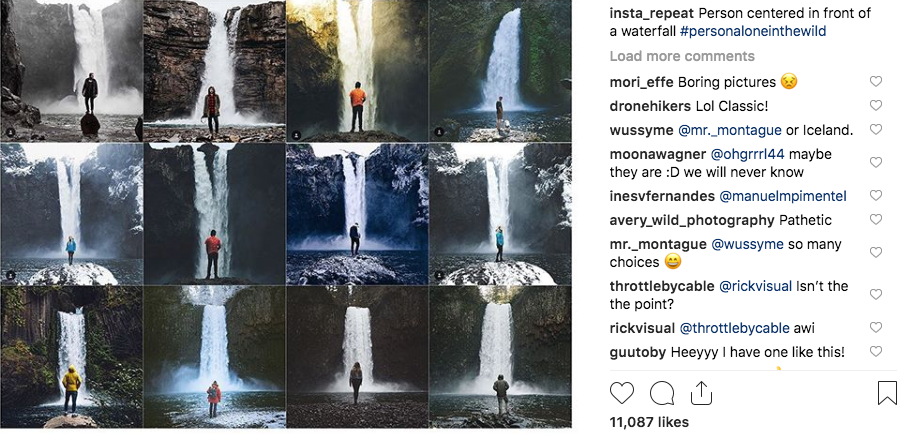Like many industries, place marketing has weathered some notorious brand disasters.
This 2010 brand video for Downtown St. Louis received criticism for portraying itself as the next über-trendy scene for hipsters and fashionistas – a new New York, perhaps?
Or consider Las Vegas. In the 1990s, city marketers tried to rebrand Sin City as a family-friendly destination. Disruptive? Yes. But this idea is light years away from what Las Vegas is really about. As one professional blackjack player told news media, “[The rebranding effort] worked very, very well — until the people started actually coming with their kids.”
In destination marketing, place brands that lack substance are doomed to disappoint. Instead, places need to find alignment with their people by building their brands on a solid foundation from the inside out.
Why is place branding such a challenge and what can you do to avoid disaster?
Disaster strikes when marketers let traditional advertising requirements guide destination branding
In one word, the problem is inertia. A destination marketing organization (DMO) at rest tends to stay at rest. Let’s unpack this.
Historically, destination marketing organizations (DMOs) relied on paid media like billboards and TV ads to project images and broadcast messages out to the masses. This was once the best available option, back when DMOs were one of the only authoritative sources of travel information (see these 1970s brochures). Since then, earned media has eclipsed both paid and owned media, which has eroded that singular authority. Today, visitor engagement and storytelling are everything.
Many DMOs are aware that the paradigm has shifted, but too many remain at rest in old modes of thinking.
Some place marketers still think they can seduce and convince people by simply adding a new layer of enticing, flashy stories to the existing brand. As a result, we see so much interchangeable content about destinations – you could almost swap the name of one place with another in some cases. Place brands that rely only on a thin veneer of new storytelling become unremarkable, adrift in the sea of sameness.

The @insta_repeat Instagram account seems to exist to remind destination marketers they can’t rely solely on eye-catching stories to differentiate themselves. Someone else is probably telling a similar story in a similar way. Instead, the challenge is to validate all of a place’s brand stories through its people.
As long as your DMO sees itself as the most important promotional voice of its destination, nothing will fundamentally change. Yes, your stories need eye-catching content to draw attention and connect with your audience. But before that, your DMO needs to understand the basic truths about your brand. Today, creative expressions, words, or images that are unsupported by a place’s identity are counterproductive.
 Idol vs. The Voice
Idol vs. The Voice
Something is changing in the way people are making choices today. Do you remember the American Idol reality TV singing competition (and its many international versions)? Later on came X Factor and nowadays, everybody is watching The Voice, with its blind auditions and battles. Each show is a singing competition, but the format has evolved along the way.
The changes were born of necessity. Idol’s vocal stage performances drew attention to the performers’ outside appearances. The show was successful at first but has been losing ratings to competitors like The Voice, where the singers’ appearance isn’t revealed until after they perform. These blind auditions are more focused on vocal quality than looks.
What has changed? People are increasingly looking for authenticity and intrinsic value. They’re fed up with the package and want to have a look at what’s inside.
And so it is for places. St. Louis and Las Vegas had brand backlashes because the new shiny exterior didn’t align with the identities of those places.
The outside-in approach to place branding often starts with a perceived business opportunity in a new market segment, like families with kids, or Chinese outbound travellers. But that method is fraught with problems. A 2010 paper by media researchers Sebastian Zenker and Sibylle Petersen states that “the perception of places by an external target audience does often contain rather simple stereotypes.”
When places let outward perception drive their brands, they reinforce stereotypes instead of expressing a nuanced identity that people in the destination can rally around. Visitors can see through false promises, especially in the digital age. Imaginary benefits are a recipe for visitor disappointment and negative word of mouth.
At Destination Think, we see this too often in cities and DMOs. We’ve often talked about the importance of the authenticity of a place brand and how to start from a strong foundation. Our process for revealing a place’s identity is called Place DNA®.
Place brands built on identity and collaboration avoid catastrophe
Through community and collaboration, Place DNA® gives your brand street credibility – that is, your branding and marketing activities become validated by your citizens. This research methodology provides DMOs with data to support everything from branding, to campaigns to destination development.
What is Place DNA®?
Destination Think’s Place DNA® methodology helps DMOs understand their destination’s identity so that they can move towards authentic destination marketing and management, backed by their stakeholders. This highly collaborative process shows how residents see the place where they live, how others perceive it, and how this compares with the place’s identity or DNA.
Place brand strategy needs to start with Place DNA®’s inside-out approach to ensure authenticity because a true place brand comes from its people. At Destination Think, we’ve seen this approach consistently succeed with our clients in places like Colorado, Calgary, and Campbell River.
Contact our team to get started with Place DNA® for your destination.
Two place branding pitfalls to avoid
Keep these words of caution in mind as your DMO works to uncover its identity.
Pitfall #1: Believing that your identity is also your brand
Through our experience with many destinations in Australia, Canada, Europe, and the U.S., we’ve seen that it is possible to confuse a destination’s identity with its brand. Identity and brand are closely linked, but they are not the same.
Identity, or Place DNA®, is the foundation, the starting point for all marketing activity, including branding. It validates your marketing and prevents you from going against the wishes of the owners of your brand (the people who live in your destination) by beginning with thorough research. Everything you say about your place should be rooted in this data. Your brand, on the other hand, is the collection of stories and experiences your destination chooses to emphasize and develop.
“Brand is a choice. Identity is not a choice.”
– William Bakker, Chief Strategist, Destination Think
Pitfall #2: Relying on a homogenous identity
A place’s inhabitants are diverse and therefore make it nearly impossible to construct a single place identity. Visitor experiences are just as diverse, and so are the stories they tell.
The urge to find a single story is a relic of traditional marketing. Marketers are often pushed toward developing a distinctive, creative brand concept – imagine designing a brand for a new soft drink or a pair of shoes, where you could invent a representative story. This approach doesn’t work in place branding.
One of the special things about place branding is that it must, by necessity, contain an enormous combination of stories and experiences. Places must find what Simon Anholt calls “competitive identity.” Your Place DNA® can help you articulate your destination’s identity in a way that highlights how it is different from all other places, or least, different than its competitors.
This kind of success only happens when your destination and its people connect visitors with the experiences they love, who also bring value to the local community.
Which brings us to perhaps the most important question.
Can you define your brand’s purpose?
Collaboration can also shed light on the values that your stakeholders hold most dear. When applied to brand strategy, these values help articulate your brand purpose.
What is your place or destination about? What does it contribute to the world? In our experience, the most meaningful brand work happens when stakeholders – residents included – find a set of common goals and principles that unite them. Your DMO can help to make this happen.
Place DNA® is the beginning of the place branding journey, yet it’s far from the end. Instead, it’s the key that lets DMOs unlock the stories of its people, however they shape your destination.
Related reading: What is Place DNA®? Here’s your essential reading list
Feature image credit: Gauthier Delecroix, Flickr









0 Comments